Collage – A contemporary art form
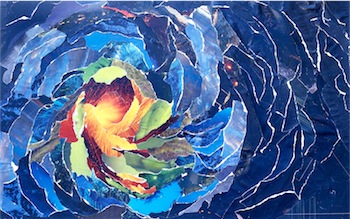
Collage, from the French verb coller (“to glue”) is the general term for an artistic arrangement of various materials glued to a surface. See the collage “Cosmos” left by artist Diane Cadrain. Just about any material-fabric, wood, metal can be used in making collages. When more than one type of material is employed in the same work, the product is called an assemblage. An assemblage may incorporate such found objects as nuts and bolts, doorknobs, rag dolls whatever the artist finds pleasing.
Collage has long been a popular hobby because no special training as an artist is required to practice the craft. When early in the 20th century Georges Braque and Pablo Picasso began to incorporate collage into their paintings, this former folk-art quickly attained the level of a serious art form. Other artists soon turned to collage, and it has exerted an important influence on 20th-century art.
Apart from the materials of the collage itself (discussed below), you will need glue, brushes, and a mounting support. Supports are normally made either from Masonite, particleboard, or plywood. A support 1/8 to 1/4 inch thick with suffice for most work. A large assemblage incorporating many heavy materials may require a thicker support and special fastening techniques, as discussid in the assemblage section, below.
Though more expensive than the above materials, canvas can also be used as a support – either mounted on a stretcher or glued to a board. It is the obvious surface to use when combining collage and painting.
The adhesives most commonly used in collage are polyvinyl acetate (PVA), or white glue, and acrylic polymer. Both are normally thinned with water in a ratio of 1 part glue to 1 part water. Acrylic polymer also acts as a varnish, giving the surface a polished look.
Working with paper
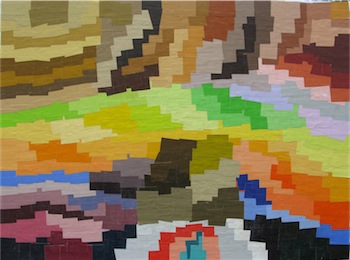
Any kind of paper can be used in collage. As in this work (left) by Alex Masket. Popular choices include newspaper, magazine illustrations, post-cards, photographs, greeting cards, posters, billboard signs, gift paper, old letters, and wallpaper. Wrappers from candy bars have been used, as well as labels from bottles and soup cans. Finely textured tissue papers are available in a range of colors from art stores. For paper with body and texture you can use paper napkins and paper towels. Japanese rice papers also have interesting textures and possess their own intrinsic beauty. Rice papers, available in most art stores, come in different weights, colors, and textures.
Experimentation. Tissue papers change color to lighter shades when they are glued. Two pieces of the same color glued together will produce an interesting mottled pattern. Gluing tissue papers of different colors on top of one another yields a variety of interesting effects, owing to the translucency of the paper.
The key to collage is experimentation. Begin by selecting papers with colors and textures that interest you. Cut out illustrations you like, or cut silhouettes from different kinds of papers. Lay them on your support and experiment with different arrangements. A design may grow as you shift and rearrange the cutouts.
When you have arrived at a pleasing arrangement, glue it down, but don’t feel bound by the finished result. If after several days you are dissatisfied, add other shapes and papers.
Sizing and priming. PVA and acrylic polymer adhesives will cause the thinnest (l/8 inch) Masonite to warp as it dries. To prevent this, size the board before applying the collage. Sizing consists of coating both sides of the Masonite with a diluted solution of the same adhesive you plan to use in the collage, then letting the board dry before you proceed. Dilute the adhesive with water until it has the consistency of light cream. Adhesive sizing dries clear, leaving the background the brown color of the Masonite underneath the sizing.
As an alternative to sizing with adhesive, the surface can be primed with gesso. Gesso is a white primer painters use to seal canvases; it gives the support a white background.
Working with fabrics
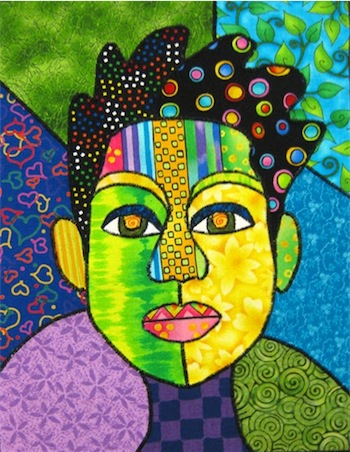
Fabrics – textiles – are often used to great effect in collage work. This delightful fabric collage, pictured left, is by artist Dij Pacarro. They contribute organic textures and a weighty appearance that are totally different in effect from anything that can be achieved by using paper.
The fabrics appropriate for collage are varied and numerous. Burlap and canvas are excellent for their obvious, rough-hewn textures; both also make good background materials. When applied on top of these heavier fabrics, lighter, more colorful materials such as silk, cotton, and nylon provide interesting contrasts. Other fabrics suitable for collage include, brocade and upholstery material, chair caning, gauze and netting of various kinds, string and rope, lace, ribbons, velvet, old flannel shirts, denim, old towels, and quilts.
As with paper, fabrics need not be new or in perfect condition to be usable. In fact, old ripped, faded, and damaged fabrics often possess an intrinsic symbolic and textural value lacking in new fabrics. You may want to buy new material to obtain certain textures or to realize a particular idea. But frequently the fabrics you need will be no farther away than your closets, drawers, basement, or attic.
Fabric tends to lend itself to larger work than paper used alone. In general, therefore, you should use at least a ¼ – inch – thick sheet of plywood, Masonite, or particle board as a support.
Prime or size the board as for paper (see above), then apply any background material you like. You can use the same adhesives as those used for paper. PVA is better than acrylic when gluing larger, heavier pieces, though acrylic is acceptable for smaller pieces. When gluing fabrics, do not dilute the adhesive. Apply it liberally. As with paper, a final coat or two of acrylic will produce a glazed finish that accentuates the textures.
Assemblage
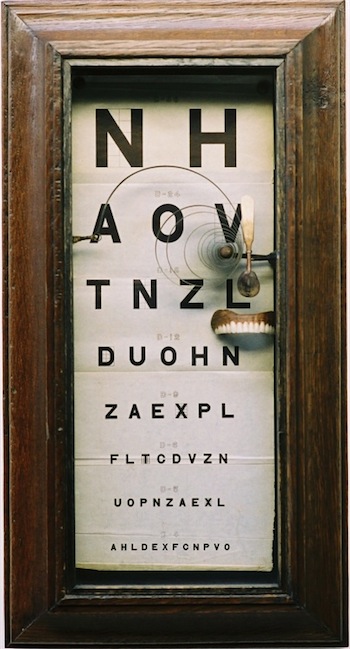
An assemblage is a collage incorporating materials or objects other than paper and fabric. Although an assemblage often makes use of paper and fabrics, objects predominate, since the purpose is to create an architectonic effect of three-dimensional space.
These objects are customarily called “found objects,” from the French objets trouvés. As with collage, the origins of assemblage are associated with Picasso and Braque. “Found object” is usually interpreted to mean any utilitarian object that has outlived its purpose. Left an assemblage by Johann Dieter Wassmann (Jeff Wassmann), Vorwarts! (Go Forward!), 1897. As an expression of our technological age, manufactured mechanical objects have been used with telling effect: watch mechanisms, clock and watch faces, gears, springs, washers sheet metal, hubcaps, eyeglasses, jewelry and computer parts. But the objects need not be strictly utilitarian. You could use eggshells and seashells, pinecones, dried leaves, pebbles, fishbones. The true grist of assemblage is junk – junk put to a new, creative use.
As with paper and fabrics, you should experiment with an assortment of objects to determine design possibilities. The construction of an assemblage differs from other collage work primarily in that adhesives are not always the best means for attaching objects to the support. Although undiluted white glue will bind many lightweight metal pieces to wood or fabric, there may be times when you will want to nail, tack, or screw things into place, depending on their weight and texture. Objects can also be embedded in a thick coat of modeling paste, an adhesive used for heavier metal articles.
The weight of the objects and the screws or nails used to hold them will determine the thickness of the support you will need.
Reference: Readers Digest Crafts & Hobbies – A Step-by-Step guide to Creative Skills.
& Wiki Commons.




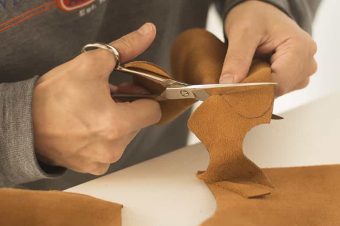
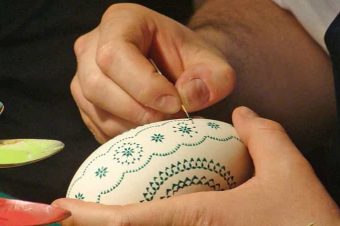
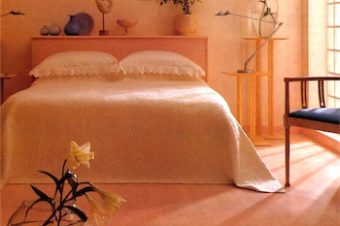
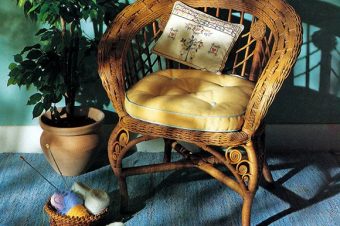
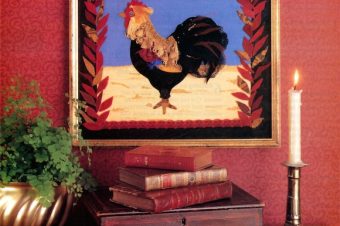
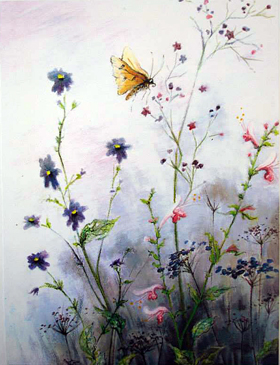
4 Responses
Wood Carving & Sculpture Remains a Vital Art Form - Crafting DIY
[…] has contributed to the decline of wood carving sculpture in modern times, it remains a vital art form. The tools and techniques have changed little since its beginning, so the art of wood sculpture […]
Landscape Picture With a Low-end Mobile Phone - Crafting DIY
[…] featuring subjects such as strongly defined landforms, weather, and ambient light. As with most forms of art, the definition of a landscape photograph is broad and may include rural or urban settings, […]
10 Best Crafting Hobbies to Try at Home - Crafting DIY
[…] and drawing are fundamental art forms that offer endless creative possibilities. Whether you prefer watercolors, acrylics, oils, or […]
Sand Art - Crafting DIY
[…] by the wavy dunes of the Middle Eastern and African deserts Sand Art in bottles takes on the same undulating forms. Sand Art is thought to have started in the city of Petra, Jordan that is encircled by […]